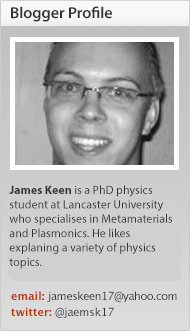« Prev Next »
The speed of light in free space - 186,282 miles per second - has long been regarded as an absolute, a unwavering constant "C" at the heart of physics.
But physicists have now shaken that concept, by making light travel a little bit slower than it should.
The researchers - members of the Scottish Universities Physics Alliance - recently published their work in the Science Express journal.
Light moves slower when it passes through things, like water or glass or me and you. Many experiments have studied slowing down light in a variety of materials. But afterwards light always returns to travelling at its maximum speed through free space... or atleast, that's what we thought.
This latest idea was to not just slow down a photon, but to then keep it moving at a slower speed in the subsequent free space.
The experimental setup emulated a classic supercar drag race - two photons raced each other in the lab along a path about a metre in length. But one of them along the way passed through a special mask - a software controlled liquid crystal device that imparted a bullseye-like pattern on the photon - which "changed the shape" of that photon. The photon can be "reshaped" due to its wave-particle duality, a weird property of quantum physics.

The two photons would usually arrive at exactly the same time, but the experiement showed that the reshaped photon arrived late - only by a miniscule amount of a few millionths of a metre, but this was enough to show its propagation speed had been slowed by the shape change. When the photon exited the mask, it did not accelerate back up to C, but remained moving at a lower speed through the free space.
This experiement is different to those previously in that instead of studying the slowing of a light pulse, a beam of photons, the experiment influences and studies single photons. The discovery that photons can propagate through free space at speed less than C is not just of theoretical imporance, it does have practical implications. The effect is most noticable when light is focused over a small distance by large lenses. Light is used to make extremely precise measurements of distance, and researchers will now need to be aware of this quirk.
The "speed of light" is no longer as fundamental as we thought it was.
Image Credits:






















